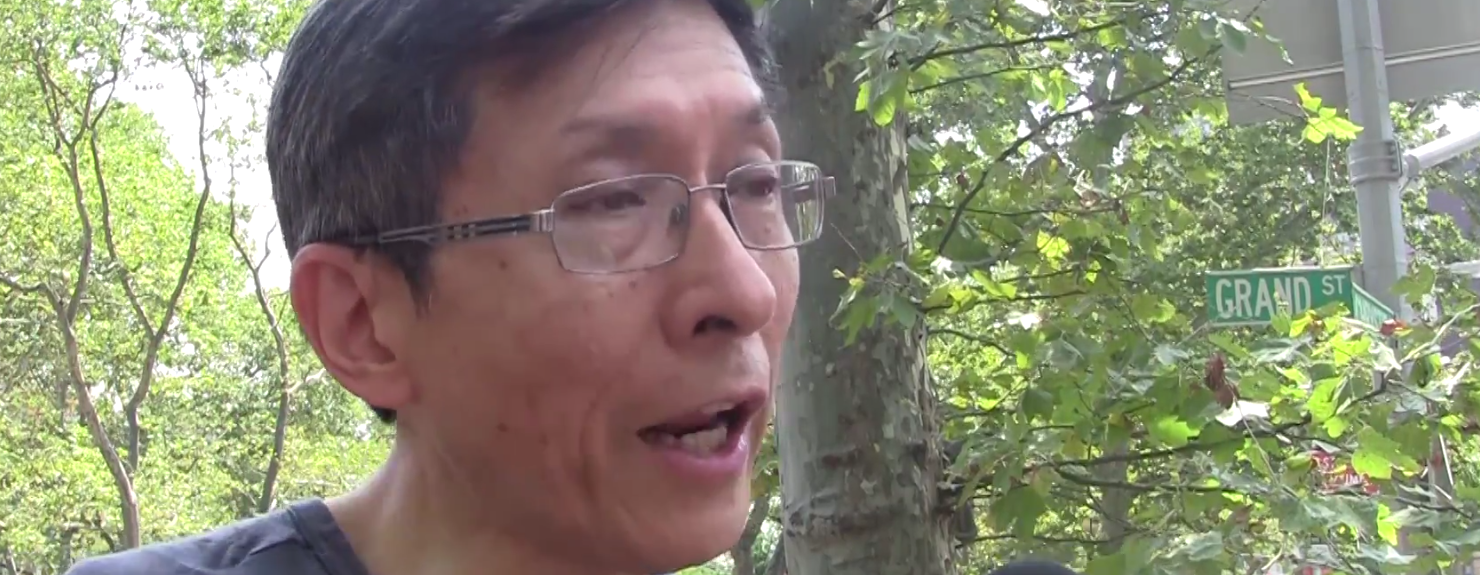Community
Ever-rising Rents Drive Longtime, Lower-income Residents from Lower Manhattan
By Justin Chae
Spectrum staff
[youtube]https://www.youtube.com/watch?v=1fBp7ptCKNM[/youtube]
Additional footage and camera: Avery Kim
More than 6,000 Chinese and Chinese American residents left historic Chinatown between 1990 and 2010—many of them because rents have risen faster than their salaries.
In the neighboring Lower East Side, rising rents have caused similar changes.
“The Latino population has gone down by 70 percent since the ‘80s,” said Wasim Lone, director of housing at Good Old Lower East Side. “The black population has gone down by 25 percent and ethnic European groups have been in a general decline.”
Activists, politicians and others concerned about low-income people being displaced from their homes and about the changing ethnic flavor of neighborhoods—Chinatown’s white population jumped from 19 percent to 41 percent between 1990 and 2010—are speaking out.
“The cost of rent … is the No. 1 defining issue of the day; it is the No. 1 economic justice issue of the day; it is the No. 1 urban vitality issue of the day,” said Paul Newell, Democratic leader of the 65th State Assembly District, which includes Chinatown, the Lower East Side and other Lower Manhattan neighborhoods.
Rising rent and other aspects of what some see as an affordable housing crisis—in a city increasingly dotted with top-dollar luxury condos—are deeply troubling, observers said.
Nevertheless, other forces also are shifting the character of those two Lower Manhattan enclaves. For example, struggling immigrants created and still come to Chinatown. But the children of many of those immigrants are moving upward and, often, onward, said Wellington Chen, executive director of the Chinatown Business Improvement District and Chinatown Partnership.
“You work very hard,” Chen said. “You send your kids to schools, to colleges, and, when they’re grown, did you ever tell them to come back and sell bananas with that college degree? No. Did you ask them to come back and take over the noodle shop with the hot boiling kitchen with no air conditioning cooking, where it’s 95 degrees? No. You say, ‘Johnny, go out there. Do good.’”
Despite that and related concerns, Chen chooses to focus on the positives. “Out of 5,000 units in my service area, 4,200 are rent-controlled and stabilized,” said Chen, noting how some affordable housing is being preserved.
In addition, he said, cultural heritage events such as the annual Chinese water festival in Sara D. Roosevelt Park, hosted by the Myanmar Chinese Association, have helped unify some in the community and spotlight Chinatown’s history.
In the meantime, challenges remain. Rental housing costs in Chinatown and the Lower East Side—areas where some of the poorest New Yorkers live—increased 50.3 percent from 1990 to 2014, according to a 2014 report from NYU’s Furman Center in 2014.
Too many New Yorkers pay more than half their income in rent, often leaving little cash for food, clothes, transportation, education and other everyday costs, said Lower East Side community organizer Lone. His duties include advising struggling tenants on how to deal with landlord harassment and the threat of eviction.
Another part of the problem is that state laws protecting tenants have been weakened in recent years, observers said.
“Nineteen-ninety seven was a watershed year, where the rights of tenants were weakened by this vacancy decontrol,” Lone said. Under that change, when tenants vacated apartments where rent increases previously had been restricted, landlords were able to raise rents by as much as 20 percent.
The ripple effect was this: If tenants of those more expensive units couldn’t keep up with the rent, they got evicted. Often, landlords charged the new tenants even higher rent. In some cases, to get that higher rent, landlords harassed tenants into leaving or bought out their leases, Newell and Lone said.
“Systematic harassment is happening block by block, building by building, apartment by apartment,” Lone said of what he contends is an ongoing issue.
A notable instance of that involved Steve Croman, owner of 140 apartment buildings citywide, who was indicted in May 2016 for what officials allege was a years-long practice of harassing tenants in rent-controlled units on the Lower East Side.
Stopping that illegal harassment and winning other victories on the housing front are essential if New York City is to remain the melting pot—racially and economically—that many people admire.
“The diversity, the strength of New York City will be gone” if fewer people can afford a home in New York City, Lone said. “People come to New York to see all the different cultures: Chinatown, Korea Town …”


